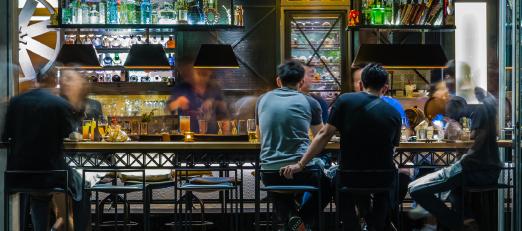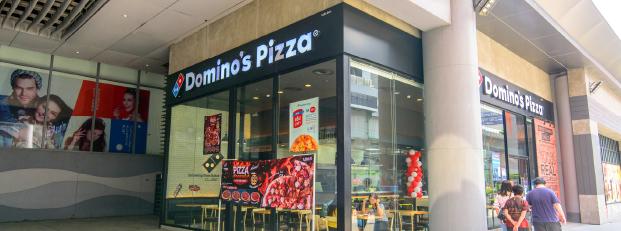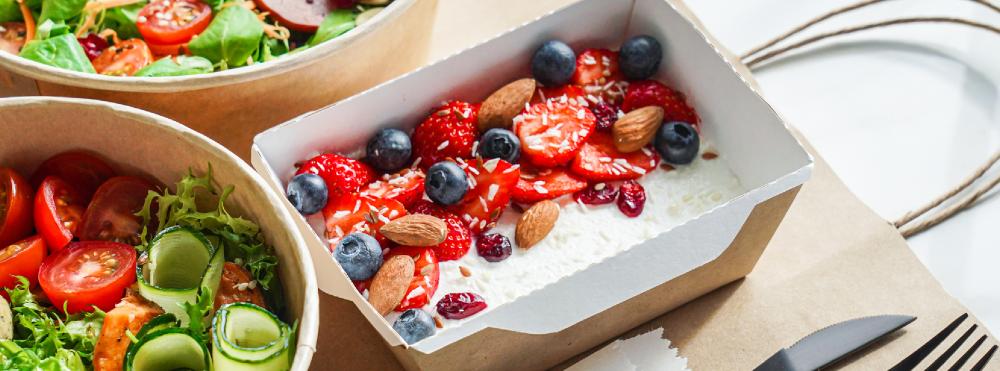7 innovative ways for Food Services companies to grow in 2021
Food Services was one of the hardest hit sectors by COVID-19 and faced many challenges in 2020, including demand destruction and scaling down of dine-in capacities as a result of tightened social-distancing measures.

With evolving consumption trends, we wanted to uncover the new norms and opportunities that emerged in a post-COVID world and discover how businesses are pivoting to navigate the challenges ahead.
To this end, DBS Research published a report to share the bank’s outlook of the sector and findings on the key priorities of restaurant operators. The information was gathered from a survey involving 16 major restaurant groups that operate a total of 20,000+ eateries across China, Hong Kong, Singapore, Thailand, and Indonesia. An industry webinar was also organised to discuss these findings with industry leaders from Domino’s China, foodpanda and Maxim’s Group.
As we enter into 2021 with a renewed sense of optimism, we bring with us seven key takeaways from the report and discussion:
1. Go the extra mile for food safety and hygiene. While standard hygiene and food safety practices have always been important in the food services business, companies will need to go above and beyond now if they want to maintain customer confidence.
Keith Siu, CFO of Maxim’s Group, concurs, “With all the restrictions and regulations on social distancing, we need to make sure that we have a safe environment for dine-in and food safety for food takeaway or delivery. We need to strengthen cleaning and sanitising procedures and minimise human contact with new processes such as order-taking through the customer’s own mobile device, or payments using contactless methods instead of cash.”

2. Fully leverage takeout and delivery. To combat the drop in dine-in customers, restaurant operators need to raise their capacities for takeout (such as by offering new menu options, combos or discounts), while increasing their partnerships with third-party delivery apps.
Building self-operated delivery logistics may work to combat commissions usually charged by third-party apps, but restaurant owners need to consider that it is generally more difficult for individual eateries to generate organic traffic and manage logistics and last-mile deliveries on their own, versus partnering with existing platforms.
As customers get used to online ordering, we expect the growth of food deliveries to sustain even post-COVID-19. Pedram Assadi, COO of foodpanda, shares, “
3. Review restaurant model and format offering. Fast food joints, cafes and food courts were the most resilient store formats during the peak of the pandemic, while full-service restaurants and bars were the worst-hit. Most restaurant chain operators we spoke to have diversified or are planning to diversify their business models to run multiple restaurant formats.
As Keith Siu, CFO of Maxim’s Group aptly puts it, “I believe that no one single restaurant model can stand out to be more successful than another as it really depends on how you tune your business model for a good mix of restaurant types, store sizes, menus and technology to deliver results in any adverse business environment."
Aileen Wang, CEO of Domino’s China, shares that having a mixed model is key to a sustainable and future-proof business strategy, saying, “As a delivery-focused brand, our location choices are more related to delivery, but we still keep some dine-in areas to meet customer needs and help establish the brand in new markets.”

4. Resize or relocate. Other than reviewing its model, full-service restaurants can consider resizing or relocating to reduce overheads – reducing seating capacity, taking up a storefront in a food court, or moving to residential hubs instead of prime tourist districts are all viable options. KFC recently introduced its first food truck in Bangkok, allowing them to reach out to a wider customer group while keeping a flexible store model.
5. Invest in product differentiation and innovation. In addition to regularly revamping menus to sustain customer loyalty and attract new diners, restaurants can diversify into complementary segments, such as instant foods, ready-packed meals, co-branded food items, beverages and desserts.
Some of the top-selling retail food items in China are instant self-heating hotpots from leading dine-in restaurants Xianhezhuang and Haidilao. Fast food brand Xiabu Xiabu launched a new beverage brand Tea Mi Tea to capitalise on popular consumer trends. With an increasing preference for convenient and safer dining at home, investing in product R&D to break into the retail food market can be a real game-changer for restaurants and caterers.

6. Digitalise to optimise operations. Digital transformation offers many benefits spanning operational efficiencies, safety, and productivity. Robot chefs and bartenders, for example, provide contactless service, better quality consistency, and serve as novelty attractions.
Contactless mobile ordering and payment options, self-order kiosks, facial recognition and personalised menus are some of the emerging trends that we believe will become increasingly popular. Data and analytics also offer forecasting capabilities to improve labour scheduling, reduce wastage and better manage costs. In a DBS use case for KFC in China, digital cashiers are projected to save the company an estimated USD37 million per annum.
7. Consider M&A opportunities. Soundly executed, acquisition is among the fastest channels for restaurants and caterers to achieve business expansion and scale. China’s Haidilao and Yum China, and Thailand’s MK Restaurant Group and Minor Food Group are some examples of businesses that are using M&A opportunities to beef up their brand portfolios and accelerate geographical expansion, even in the midst of COVID-19.
In summary, Adrian Chai, DBS MD and Group Head of Automotive, Consumer Products & Services, Food & Agribusiness, Healthcare & Pharmaceuticals and Metals & Mining Global Industries concludes that COVID-19 has changed our lives dramatically, disrupting our economy, society and lifestyles. Amidst this changing landscape, it is critical for Food Services operators to optimise efficiencies, adopt digital tools, or even venture into new revenue streams to stay relevant.
To access more detailed insights, download the full DBS Asian Insights SparX: Restaurants & Catering Sector report or watch the recording of the webinar Outlook & Key Trends Shaping the Food Services Industry.
DBS offers a comprehensive suite of cash management services and digital solutions for Food Services players like API payments and QR solutions which can help you achieve better cash management, operational efficiency, and cost optimisation. To learn more, contact us at [email protected].
#leadingwithDBS



